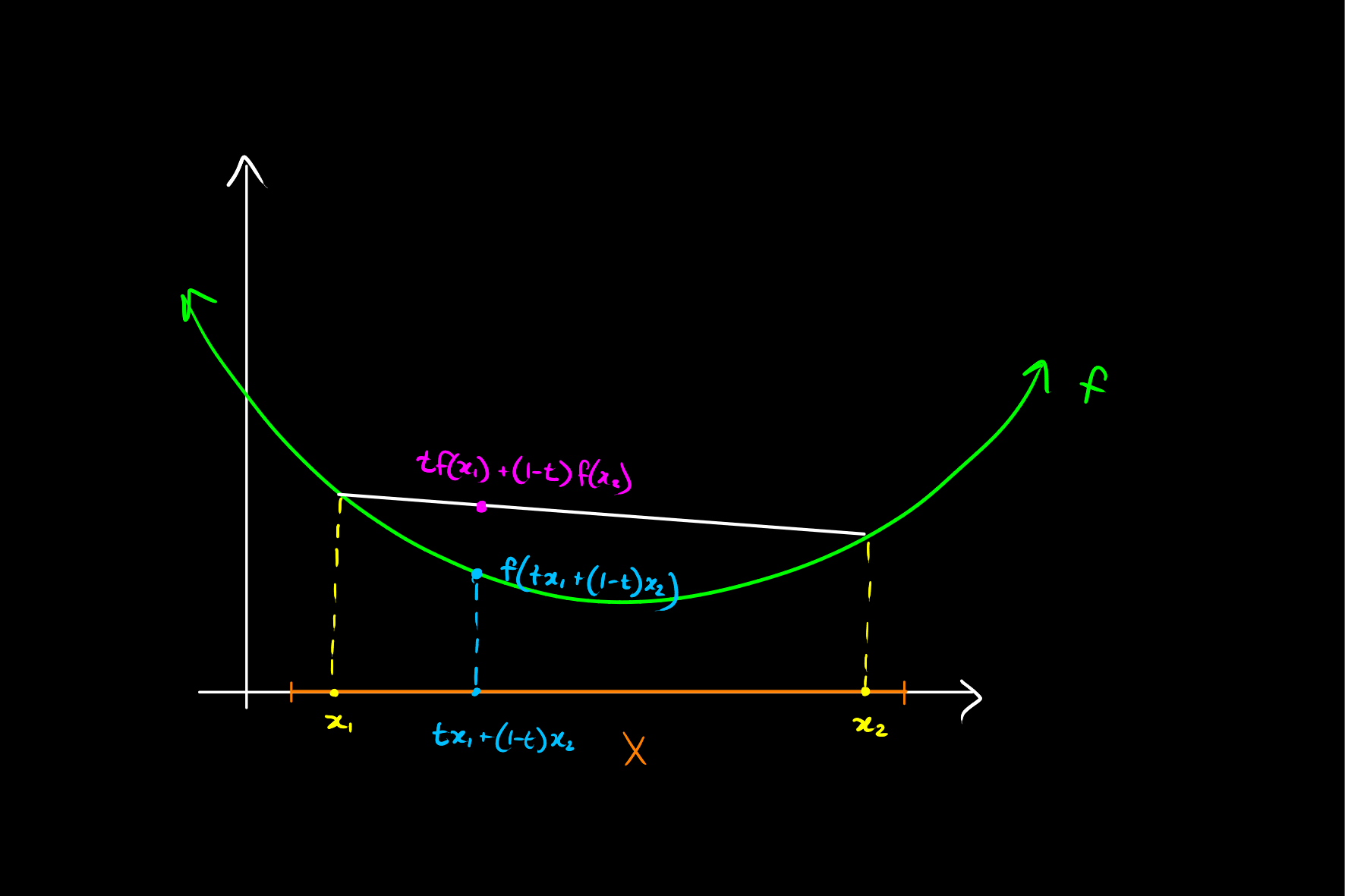Concave and Convex Functions
Definition
Let
Intuitively, this can be thought of (in the case where

A function is called concave if the above condition is changed with the reverse inequality:
The above conditions are called strict convexity and strict concavity respectively if the inequalities are strict. This is why we use the domain
An important corollary of this result gives when the value